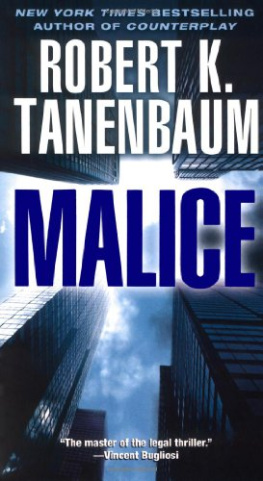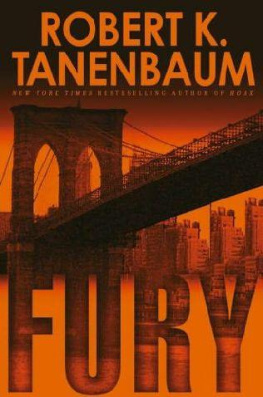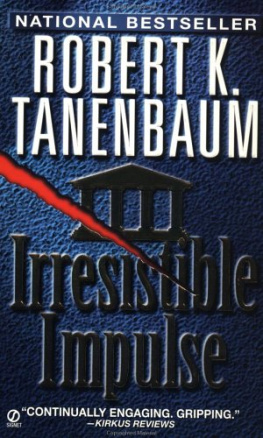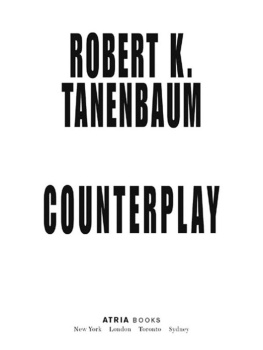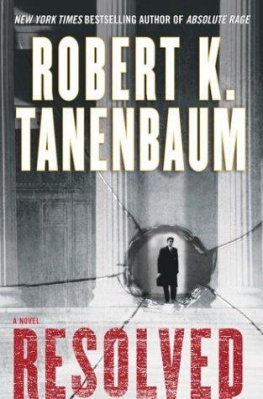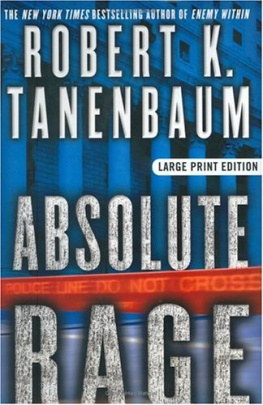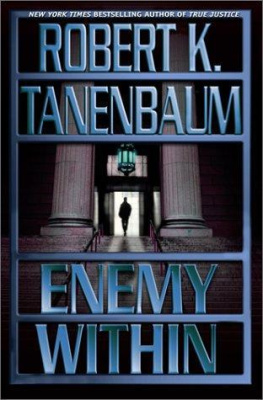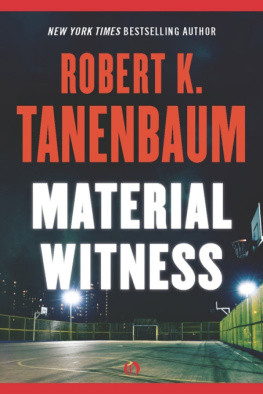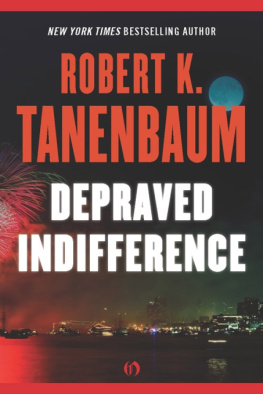Robert K. Tanenbaum - Corruption of Blood
Here you can read online Robert K. Tanenbaum - Corruption of Blood full text of the book (entire story) in english for free. Download pdf and epub, get meaning, cover and reviews about this ebook. year: 1996, publisher: Penguin Group USA, genre: Detective and thriller. Description of the work, (preface) as well as reviews are available. Best literature library LitArk.com created for fans of good reading and offers a wide selection of genres:
Romance novel
Science fiction
Adventure
Detective
Science
History
Home and family
Prose
Art
Politics
Computer
Non-fiction
Religion
Business
Children
Humor
Choose a favorite category and find really read worthwhile books. Enjoy immersion in the world of imagination, feel the emotions of the characters or learn something new for yourself, make an fascinating discovery.
- Book:Corruption of Blood
- Author:
- Publisher:Penguin Group USA
- Genre:
- Year:1996
- Rating:5 / 5
- Favourites:Add to favourites
- Your mark:
- 100
- 1
- 2
- 3
- 4
- 5
Corruption of Blood: summary, description and annotation
We offer to read an annotation, description, summary or preface (depends on what the author of the book "Corruption of Blood" wrote himself). If you haven't found the necessary information about the book — write in the comments, we will try to find it.
Corruption of Blood — read online for free the complete book (whole text) full work
Below is the text of the book, divided by pages. System saving the place of the last page read, allows you to conveniently read the book "Corruption of Blood" online for free, without having to search again every time where you left off. Put a bookmark, and you can go to the page where you finished reading at any time.
Font size:
Interval:
Bookmark:
ACKNOWLEDGMENTS
With utmost respect and admiration for Michael Gruber, my partner, collaborator, and confidant who is primarily responsible for the excellence of this manuscript and whose brilliance, expertise, and professionalism make this manuscript what it is; many kudos to fast Eddie Stackler, my editor, who is on track to be the next Henry Robbins who believed from the very beginning.
AUTHORS NOTE
Since it is a matter of record that the author was at one time counsel to the House of Representatives Select Committee on Assassinations, and charged with investigating the assassination of President Kennedy, the reader may wish to know whether the present volume tells, at last, the real story.
As is inevitable with a work of this type, the answer must be ambiguous. On the other hand, much of the documentary evidence mentioned here actually exists, or did exist at one time. The author observed it with his own eyes. Also, of course, some of the characters mentioned are historical personages, either identified by name or thinly disguised, although they may not have done or said the things attributed to them herein. The reconstruction of the assassination itself, as given here, accords with the facts as known to the author and available in the public record, although not necessarily with the conclusions of the Select Committee.
On the other hand, obviously, no one named Butch Karp was ever involved in the work of the House Select Committee in 1976. Despite superficial similarities, the author and Butch Karp are different people, or rather, the author is a real person, while Mr. Karp is not. As to the real story of the assassination of John Kennedy, the author remains unsure, as are we all, as, in all probability, we shall ever be. The assassination has receded into mythology, and has becomelike the tales of the Old West and the lives of secular saints like Washington and Lincolnfair game for the fabulist, the moralist, and the entertainer.
Thus, in the present work, the shadows thrown by various culprits, which we perceived vaguely through a fog of deception nearly twenty years ago, have been resolved into sharp focus, by artifice. In short, what you are about to read is, merely and entirely, a work of fiction, based on a real event, like the Warren Report in my opinion, of course!
Robert K. Tanenbaum is the New York Times bestselling author of twenty-five legal thrillers and has an accomplished legal career of his own. Before his first book was published, Tanenbaum had already been the Bureau Chief of the Criminal Courts, had run the Homicide Bureau, and had been in charge of the training program for the legal staff for the New York County District Attorneys Office. He also served as Deputy Chief Counsel to the Congressional Committee investigations into the assassinations of President John F. Kennedy and Martin Luther King, Jr. In his professional career, Tanenbaum has never lost a felony case. His courtroom experiences bring his books to life, especially in his bestselling series featuring prosecutor Roger Butch Karp and his wife, Marlene Ciampi.
Tanenbaum was born and raised in Brooklyn, New York. He attended the University of California at Berkeley on a basketball scholarship, and remained at Cal, where he earned his law degree from the prestigious Boalt Hall School of Law. After graduating from Berkeley Law, Tanenbaum moved back to New York to work as an assistant district attorney under the legendary New York County DA Frank Hogan. Tanenbaum then served as Deputy Chief Counsel in charge of the Congressional investigations into the assassinations of President John F. Kennedy and Martin Luther King, Jr.
The blockbuster novel Corruption of Blood (1994), is a fictionalized account of his experience in Washington, D.C.
Tanenbaum returned to the West Coast and began to serve in public office. He was elected to the Beverly Hills City Council in 1986 and twice served as the mayor of Beverly Hills. It was during this time that Tanenbaum began his career as a novelist, drawing from the many fascinating stories of his time as a New York ADA. His successful debut novel, No Lesser Plea (1987), introduces Butch Karp, an assistant district attorney who is battling for justice, and Marlene Ciampi, his associate and love interest. Tanenbaums subsequent twenty-two novels portrayed Karp and his crime fighting family and eclectic colleagues facing off against drug lords, corrupt politicians, international assassins, the mafia, and hard-core violent felons.
He has had published eight recent novels as part of the series, as well as two nonfiction titles: The Piano Teacher (1987), exploring his investigation and prosecution of a recidivist psychosexual killer, and Badge of the Assassin (1979), about his prosecution of cop killers, which was made into a movie starring James Woods as Tanenbaum.
Tanenbaum and his wife of forty-three years have three children. He currently resides in California where he has taught Advanced Criminal Procedure at the Boalt Hall School of Law and maintains a private law practice.

Tanenbaum as a toddler in the early 1940s. He was born and raised in Brooklyn, New York.

A five-year-old Tanenbaum in Brooklyn, near Ocean Parkway.

Tanenbaums family in the early 1950s. From left to right: Bob; his mother, Ruth (a teacher and homemaker); his father, Julius (businessman and lawyer); and his older brother, Bill.

Tanenbaums high school varsity basketball photo from the 5960 season. He played shooting guard, center, and forward, and earned an athletic scholarship to the University of California, Berkeley, where he continued to play.

Tanenbaum shooting during a basketball game his junior year of high school. He wore the number 14 throughout high school and college.

Tanenbaums senior portrait. In addition to basketball, he also played first base for his schools baseball team.

Standing outside a courthouse in downtown Manhattan are Tanenbaum, James Woods, NYPD detective Cliff Fenton, and Yaphet Kotto. Woods and Kotto played Tanenbaum and Fenton in the 1985 movie Badge of the Assassin, based on Tanenbaums book of the same name about a real-life murder mystery in 1971 Harlem.

Seen here in the late 1980s, Mayor Tanenbaum poses with Ed Koch, then mayor of New York City, while Tanenbaums son Billy stands in front wearing a hat given to him by Koch. The two mayors were meeting to discuss a tourist exchange program between Beverly Hills and New York City.
Next pageFont size:
Interval:
Bookmark:
Similar books «Corruption of Blood»
Look at similar books to Corruption of Blood. We have selected literature similar in name and meaning in the hope of providing readers with more options to find new, interesting, not yet read works.
Discussion, reviews of the book Corruption of Blood and just readers' own opinions. Leave your comments, write what you think about the work, its meaning or the main characters. Specify what exactly you liked and what you didn't like, and why you think so.


